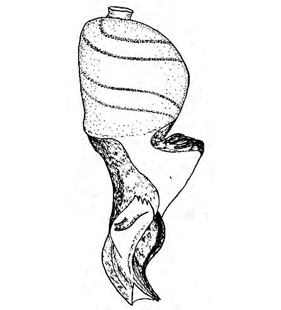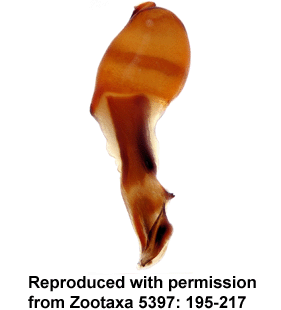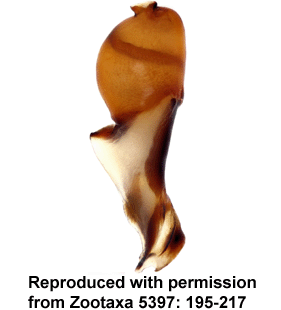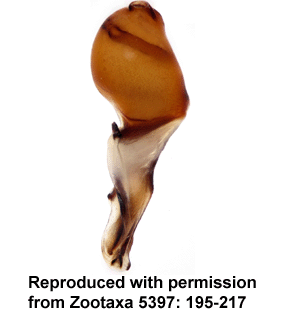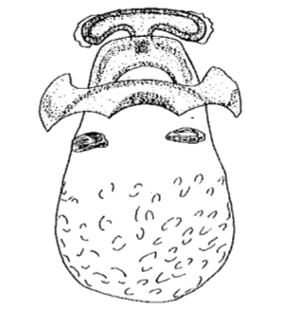Dysdera daghestanica Dunin, 1991
Beschreibung
Männchen
Prosoma 4,3 mm lang, 3,4 mm breit. Prosoma und Cheliceren braun, chagrin mit kleinen Punkten. Sternum, Labium und Gnathocoxen orangebraun mit kleinen Punkten. Beinbestachelung: Femur IV mit 1.2 dorso-basalen Stacheln; tibia III mit 1.2 ventralen, 2.1 anterioren und 1.1 posterioren Stacheln; Tibia IV mit 2.2 ventralen Stacheln. Opisthosoma grau-weiß.
Körperlänge Männchen: 10.3 mmWeibchen
Habitus ähnlich dem Männchen. Prosoma 4,10-4,65 mm lang, 3,55-3,95 mm breit. Beinbestachelung variabler als im Männchen: Femur IV mit 2-4 dorso-basalen Stacheln; Tibia III mit 1.2 ventralen, 2.2 oder 1.2 anterioren und 1.1 posterioren Stacheln; Tibia IV mit 2.2.2 oder 2.2 ventralen, 2.1 oder 1.2 oder 1.1 anterioren sowie 1.1 posterioren Stacheln.
Zusätzliche Informationen
Oberhalb 1000 m NN in Eichen-Hainbuchenwäldern am Waldrand unter Steinen.
Verbreitung
Phänologie
| Jan | Feb | Mar | Apr | May | Jun | Jul | Aug | Sep | Oct | Nov | Dec |
 |  |
Abbildungen
Verbreitungsnachweise
"No reference" bedeutet nicht, dass die Art in diesem Land nicht vorkommt, sondern dass wir die Referenz hierfür noch nicht eingefügt haben. Wir arbeiten daran.
Literatur
Dunin P M (1991a) New spider species of the genus Dysdera from the Caucasus (Aranei, Haplogynae, Dysderidae). Zoologicheskiĭ Zhurnal 70(8): 90-98 ![]()
Dunin P M (1992b) The spider family Dysderidae of the Caucasian fauna (Arachnida Aranei Haplogynae). Arthropoda Selecta 1(3): 35-76 ![]()
Otto S (2022) Caucasian spiders. A faunistic database on the spiders of the Caucasus Ecoregion. Database version 02.2022. Internet: caucasus-spiders.info.
Ponomarev A V (2022) Spiders (Arachnida: Araneae) of the southeast of the Russian Plain: catalogue, the fauna specific features. SSC RAS Publishers, Rostov-on-Don, 640 pp. ![]()
WSC (2025) World Spider Catalog. Version 26. Natural History Museum Bern, online at http://wsc.nmbe.ch (28.2.2025) doi: 10.24436/2 ![]()
Zamani A, Marusik Y M (2024) New data on Dysdera Latreille, 1804 and Harpactea Bristowe, 1939 (Araneae: Dysderidae) of the Caucasus, with new species and records. Zootaxa 5397: 195-217 ![]()
